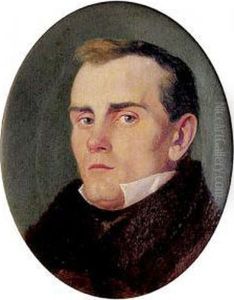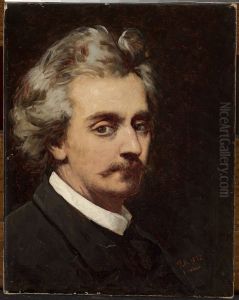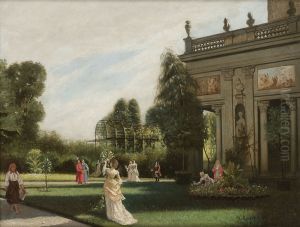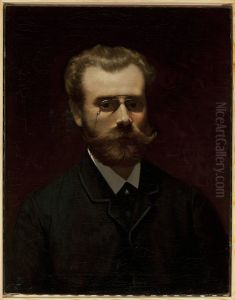Kazimierz Mirecki Paintings
Kazimierz Mirecki, also known as Casimir Mirecki, was a Polish-born artist who specialized in watercolor paintings. Born on January 1, 1809, in Lublin, Poland, he was part of a cultural epoch that saw Poland undergoing significant political and social changes. Despite the national turmoil, Mirecki managed to develop his artistic talents, eventually becoming recognized for his skill in capturing landscapes and architectural scenes.
Mirecki's artistic journey began in his homeland, but his quest for artistic growth led him to travel extensively throughout Europe. He studied art in some of the continent's most vibrant cultural centers, including Paris, where he was influenced by the French artistic milieu of the time. His education and travels were integral to his development as an artist, allowing him to absorb various styles and techniques that he would later incorporate into his work.
During his career, Mirecki became known for his mastery of watercolors, a medium that requires precision and control. His landscapes often depicted the serene Polish countryside, with a particular focus on the interplay of light and shadow. Mirecki's works were appreciated for their detail, composition, and ability to evoke emotion. He exhibited his paintings in numerous exhibitions, gaining a reputation that extended beyond his native Poland.
Despite his success, Kazimierz Mirecki remained relatively obscure in the broader European art scene, overshadowed by the dominant artistic movements of his time such as Romanticism and later, Impressionism. Nevertheless, within Poland, his contributions to the world of art were significant, capturing the beauty of the Polish landscape during a period of national struggle.
Mirecki's death on May 15, 1882, marked the end of a life dedicated to the pursuit of artistic excellence. While he may not have achieved the international acclaim of some of his contemporaries, his paintings continue to be admired for their technical skill and the window they provide into 19th-century Poland. Today, Mirecki's works can be found in various art collections, both in Poland and abroad, serving as a testament to his talent and dedication to his craft.





